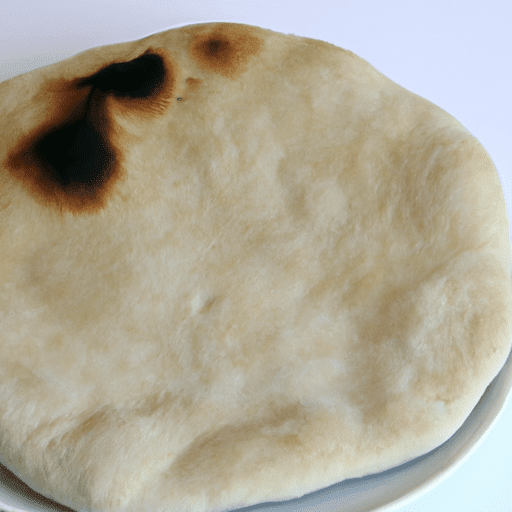The Delicious World of Flat Bread
Flat bread, a staple in many cultures around the world, is one of the most versatile and ancient forms of bread. With its thin and flexible nature, it’s no wonder that flat bread has earned a well-deserved place in our hearts and on our tables.
Taste and Culinary Uses
The taste of flat bread varies depending on the region it originates from and the ingredients used in its preparation. However, one thing remains constant - its delightful simplicity. Flat bread is often lauded for its mild flavor that serves as a perfect canvas for a wide range of toppings and fillings.
From classic favorites like the Mediterranean-style pita bread to Indian naan, these versatile creations can be enjoyed with nearly any dish. Flat bread can be used as a wrap for sandwiches filled with savory ingredients like grilled vegetables, tender meats, creamy cheeses, and fragrant herbs. It can also be enjoyed on its own as a side dish or dipped into flavorful sauces and spreads.
Nutritional Value
While specific nutritional values can vary based on the type of flat bread and its ingredients, they generally provide a wholesome and nutritious option. Many traditional flat breads are made from whole grains, adding fiber and other essential nutrients to your diet. Plus, flat bread tends to be lower in calories and fat compared to other bread varieties, making it a healthier alternative.
A Journey Through Flat Bread’s Rich History
Flat bread has walked the earth for thousands of years, playing an essential role in feeding populations across various civilizations. Its origin dates back to ancient times when people discovered that cooking dough on hot stones or in clay ovens yielded delicious results.
In India, where flat bread is a staple, naan has been enjoyed for more than 2,000 years. With its soft and chewy texture, naan is an essential accompaniment to popular Indian dishes like curry and tandoori.
The Mediterranean region is famous for its unique flat bread variations. The Middle Eastern pita bread, for example, boasts a pocket-like structure that is perfect for stuffing with falafel, hummus, or an array of fresh veggies.
Not to be forgotten, Mexican cuisine boasts the tortilla, a type of flat bread made from corn or wheat flour. With its versatility and ability to hold everything from savory fillings to sweet treats, the tortilla is a beloved component of Mexican cuisine.
Fun Facts Worth Knowing
- Flat bread played a significant role in ancient civilizations, serving as a reliable source of sustenance during long journeys and wars.
- The world’s largest flat bread was created in India in 2011 and measured an astonishing 10,890 feet long!
- Different cultures have their unique way of baking flat bread. In Sweden, they make “tunnbröd,” a thin and crispy flat bread baked on large wheels.
Conclusion
Flat bread, with its simplicity, versatility, and rich history, remains an integral part of our culinary landscape. Whether you enjoy it as a vessel for delectable fillings or as a companion to hearty stews, flat bread never fails to offer a delightful experience. Experiment with different types and flavors, and let your taste buds embark on a flavorful journey that spans cultures and continents.
Flat Bread
Origin: Flat bread has been consumed by humans for thousands of years and is one of the earliest types of bread. The exact origin of flat bread is uncertain, but it can be traced back to ancient civilizations, including those in the Middle East, India, and Egypt.
Common Uses: Flat bread is a versatile bread that can be used in various culinary applications. It can be used as a base for sandwiches, wraps, or pizzas. It can also be torn into pieces and used for dipping in soups, stews, or sauces. Different cultures have their own variations of flat bread, such as naan in Indian cuisine, pita in Middle Eastern cuisine, and tortilla in Mexican cuisine.
Nutritional Benefits: Flat bread can be a healthier alternative to traditional bread, depending on the ingredients used. It is often made with whole grains, which provide essential nutrients like fiber, vitamins, and minerals. Flat bread can be lower in calories than other bread types, making it a suitable choice for those watching their calorie intake.
Unique Properties: One distinctive property of flat bread is its flat shape, which is achieved by rolling the dough into thin, circular sheets. Flat bread is usually cooked at high heat, causing it to puff up, creating air pockets within the bread. This gives it a light and airy texture. The shape and texture of flat bread also make it easier to handle and fill with various ingredients.
Historical Significance: Flat bread has played a significant role in human history, particularly in ancient civilizations. It was an important staple food due to its simplicity and ease of preparation. Flat breads were often cooked on hot stones or clay ovens. Some historical evidence suggests that flat bread may have also been used as a form of currency or as an offering in religious ceremonies.




Use the share button below if you liked it.
It makes me smile, when I see it.